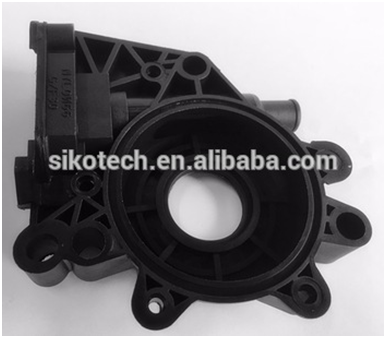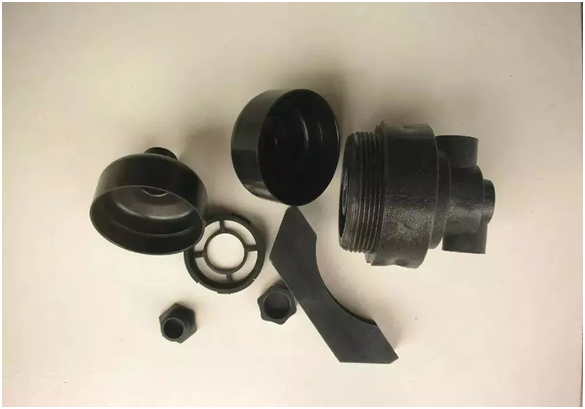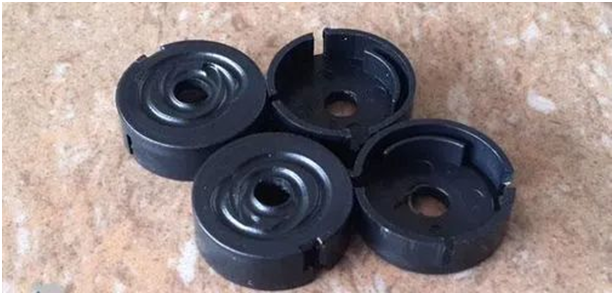©Copyright 2019 SIKO POLYMERS (SUZHOU) CO., LTD All rights reserved.Site Map Powered by iwonder.cn
- Email Uskevin@sikopolymers.com


Size instability refers to the change of the size of plastic parts between each batch of molded products or between each cavity molded product produced by each mold under the same injection molding machine and molding process conditions.
The change of product size is caused by abnormal equipment control, unreasonable injection molding conditions, poor product design and material properties.

Defect analysis and elimination method of dimensional instability injection molding
1) Forming conditions are inconsistent or improper operation
Injection molding, temperature, pressure and time and other process parameters, must be controlled in strict accordance with the process requirements, especially the molding cycle of each plastic part must be consistent, can not change at will. If the injection pressure is too low, the holding time is too short, the mold temperature is too low or uneven, the temperature at the barrel and nozzle is too high, and the cooling of the plastic parts is insufficient, it will lead to the size of the plastic parts is unstable.
Under normal circumstances, the use of higher injection pressure and injection speed, appropriately extend the mold filling and pressure holding time, improve the mold temperature and material temperature, it is beneficial to overcome the size instability fault.
If the shape size of the plastic parts is larger than the required size, the injection pressure and molten temperature should be properly reduced, the mold temperature should be increased, the mold filling time should be shortened, the gate cross-sectional area should be reduced, so as to improve the shrinkage rate of the plastic parts.
If the size of the molded part is less than the required size, the opposite molding conditions should be adopted.
It is worth noting that the change of environmental temperature also has a certain influence on the fluctuation of molding size of plastic parts. The process temperature of equipment and mold should be adjusted timely according to the change of external environment.
2) Improper selection of molding materials
The shrinkage of molding materials has great influence on the dimensional accuracy of plastic parts. If the accuracy of molding equipment and mold is very high, but the shrinkage rate of molding raw materials is very large, it is difficult to ensure the dimensional accuracy of plastic parts. Under normal circumstances, the greater the shrinkage rate of molding raw materials, the more difficult to ensure the dimensional accuracy of plastic parts.
Therefore, in the selection of molding resin, we must fully consider the effect of the shrinkage of raw materials after molding on the dimensional accuracy of plastic parts. For the selection of raw materials, the range of shrinkage can not be greater than the requirements of the dimensional accuracy of plastic parts.
It should be noted that the shrinkage rate of various resins varies greatly, according to the degree of crystallization of the resin analysis. Usually, the shrinkage of crystalline and semi-crystalline resin is larger than that of non-crystalline resin, and the range of shrinkage variation is also larger, and the shrinkage fluctuation of the corresponding plastic parts after molding is also larger; For crystallized resin, crystallinity is high, molecular volume is reduced, the shrinkage of plastic parts is large, the size of resin spherulite also has an impact on the shrinkage rate, spherulite is small, the gap between molecules is small, the shrinkage of plastic parts is small, and the impact strength of plastic parts is relatively high.
In addition, if the particle size of the molding raw materials is uneven, the drying is poor, the re-raw material and the new material are mixed uneven, the performance of each batch of raw materials is different, it will also cause the fluctuation of the molding size of the plastic parts.

3) Mold failure
The structural design and manufacturing accuracy of the mold directly affect the dimensional accuracy of the plastic parts. In the molding process, if the rigidity of the mold is insufficient or the molding pressure in the mold cavity is too high, the mold will be deformed, and the molding size of the plastic parts will be unstable.
If the mold guide column and guide sleeve match gap due to poor manufacturing accuracy or wear too much and out of tolerance, it will also make the molding dimensional accuracy of plastic parts decrease.
If there are hard fillers or glass fiber reinforced materials in the molding material leading to serious wear of the mold cavity, or the use of a mold multi-cavity molding, there are errors between the cavity and the gate, flow channel and feed port errors and other reasons such as inconsistent filling, will also cause size fluctuations.
Therefore, in the design of the mold, we should design sufficient strength and rigidity of the mold, strictly control the processing precision, the mold cavity material should use wear-resistant materials, and the surface of the mold cavity is best treated with heat treatment and cold hardening. When the dimensional accuracy of plastic parts is very high, it is best not to use the structural form of one mold and multiple cavities. Otherwise, in order to ensure the molding accuracy of plastic parts, a series of auxiliary devices must be set up on the mold to ensure the accuracy of the mold, resulting in high production cost of the mold.
When the thickness error occurs in the plastic parts, it is often caused by mold failure. If the wall thickness of plastic parts is biased error under the condition of one mold and one cavity, it is generally due to the installation error and poor positioning of the mold leading to the relative position deviation of the mold cavity and the core.
At this time, for those plastic parts whose wall thickness requirements are very accurate, they can not be located only by the guide column and guide sleeve, and other positioning devices must be added; If the thickness error is generated under the condition of one mode and multiple cavities, under normal circumstances, the error is small at the beginning of the forming, but the error gradually becomes larger after continuous operation, which is mainly caused by the error between the cavity and the core, especially when the hot runner mold molding is the most likely to produce this phenomenon.

To this end, a double cooling loop with small temperature difference can be set up in the mold. If it is a thin-walled circular container, a floating core can be used, but the core and the cavity must be concentric.
In addition, in the production of the mold, in order to facilitate the repair of the mold, generally always used to do the cavity is smaller than the required size, the core is larger than the required size, set aside a certain repair margin. When the inner diameter of the molding hole of the plastic parts is very smaller than the outer diameter, the core pin should be made larger, this is because the shrinkage of the plastic parts at the molding hole is always greater than other parts, and the direction of the hole center contraction. On the contrary, if the inner diameter of the molding hole is close to the outer diameter, the core pin can be made smaller.
4) The device is faulty
If the plasticizing capacity of the molding equipment is insufficient, the feeding system is not stable, the speed of the screw is not stable, the stopping effect is abnormal, the check valve of the hydraulic system fails, the thermocouple is burned out in the temperature control system, the heater is broken, etc., all of which will lead to the molding size of the plastic parts is not stable. As long as these faults are found out, targeted measures can be taken to eliminate them.
5) Inconsistent test methods or conditions
If the method of measuring the size of plastic parts, time, temperature is different, the size will be very different. The temperature conditions have the greatest impact on the test, because the coefficient of thermal expansion of plastics is 10 times greater than that of metals. Therefore, it is necessary to use the standard method and temperature conditions to determine the structural size of the plastic parts, and the plastic parts must be fully cooled and shaped before measurement. General plastic parts in the mode of 10 hours within the size change is great, 24 hours to the basic shape.